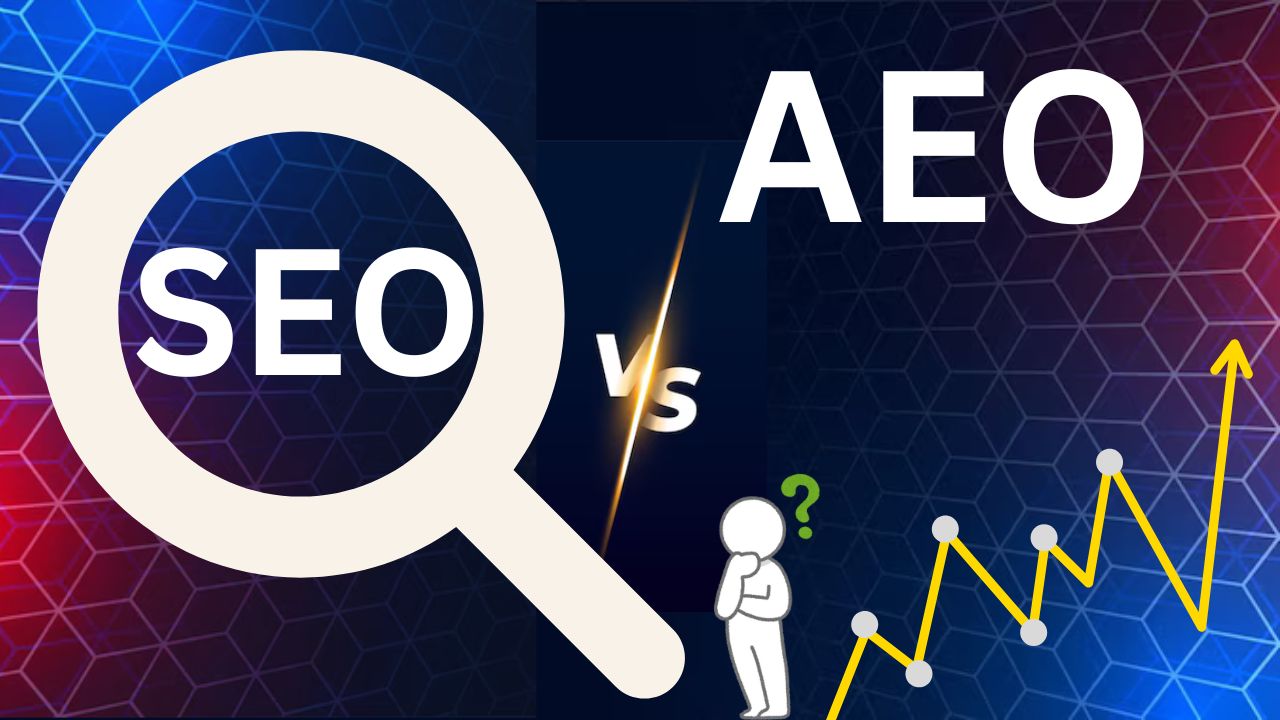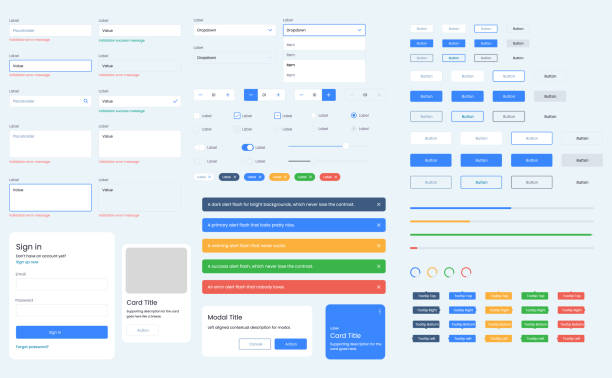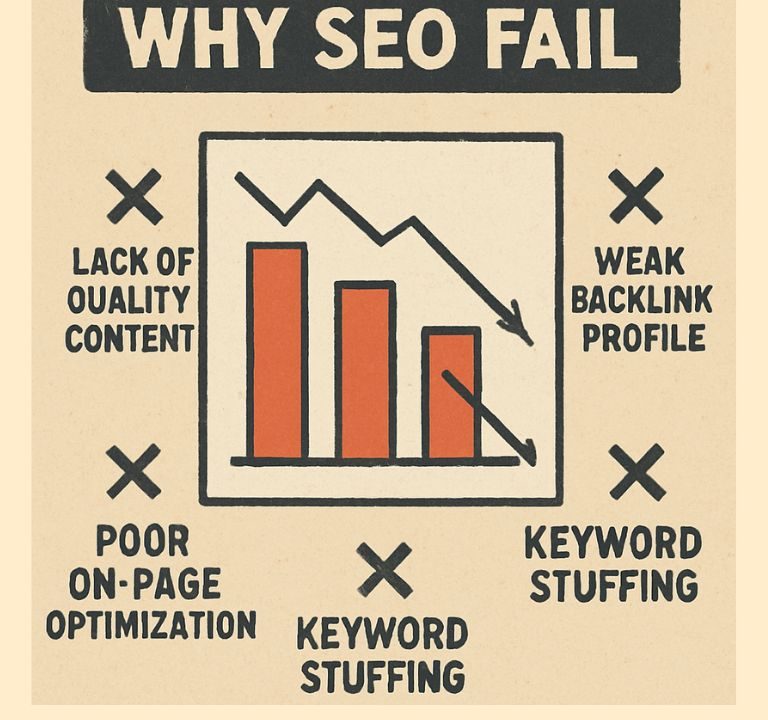AEO vs SEO: IS YOUR CONTENT RANKING FOR GOOGLE OR AI
In the digital world, content ranking is crucial. It determines visibility and reach. But are you optimizing for Google or AI?
SEO, or Search Engine Optimization, has been the go-to strategy. It focuses on improving search engine rankings. Techniques include keyword optimization and backlinking.
However, the landscape is changing. Enter AEO, or Answer Engine Optimization. AEO targets AI-driven search engines. It aims to provide direct answers to user queries.
The rise of AI is reshaping search. Traditional SEO must adapt. AEO offers new opportunities for content creators.
Understanding the difference between SEO and AEO is vital. Each has unique benefits and applications. Both are essential for a comprehensive digital strategy.
SEO remains foundational. It’s about visibility in search engine results. AEO, on the other hand, enhances AI interaction.
The effectiveness of AEO vs traditional SEO varies. It depends on the search engine’s AI capabilities. As AI technology advances, AEO becomes more relevant.
AEO strategies focus on structuring content for AI understanding. This includes using schema markup and natural language processing.
SEO techniques are evolving. They now incorporate elements of AEO. This hybrid approach is crucial for future-proofing content.
In this guide, we’ll explore AEO vs SEO in depth. We’ll compare their effectiveness and strategies. Discover how to optimize your content for both Google and AI.
What is SEO? The Foundation of Search Engine Optimization
Search Engine Optimization, or SEO, is fundamental for online visibility. It’s the art of enhancing your website for search engine prominence.
The goal of SEO is straightforward—achieving higher rankings in search engine results pages (SERPs). This ensures greater visibility and potentially more traffic to your site.
SEO is built on several core strategies. These techniques are designed to meet search engine criteria and enhance user experience.
Key SEO Techniques:
- Keyword Optimization: Identifying and using relevant keywords.
- Content Quality: Producing engaging and informative content.
- Backlinking: Building quality links from reputable sites.
SEO effectiveness hinges on understanding search engine algorithms. These algorithms evaluate numerous elements, such as keyword relevance and page speed.
Monitoring and adjusting to these algorithms is essential. Search engines frequently update their criteria, affecting rankings.
Technical SEO plays a significant role as well. It involves optimizing website structure and navigation. Proper use of meta tags and alt attributes is also crucial.
Engaging visuals, like infographics, support effective SEO. They enhance user interaction and retention.
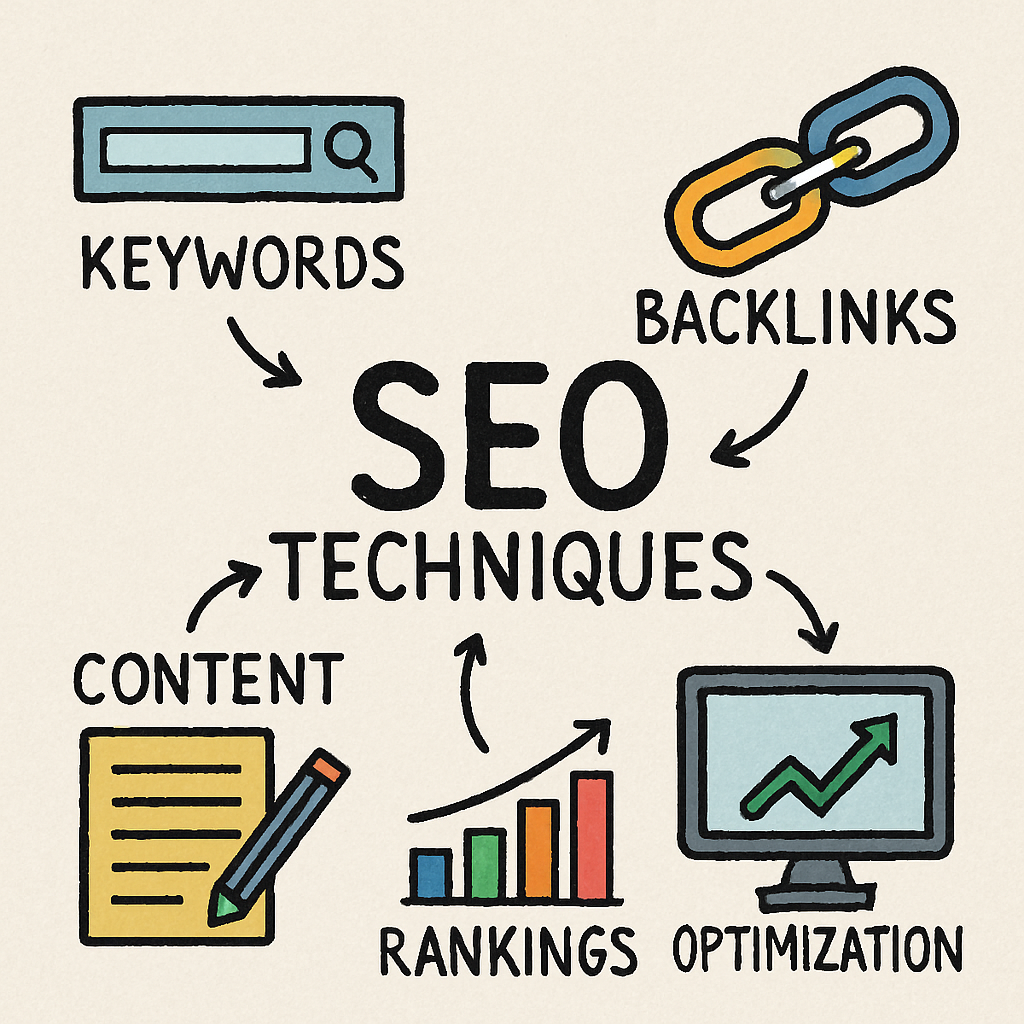
User experience and SEO are interlinked. Simplified design and easy navigation improve user satisfaction, aiding rankings.
SEO isn’t static. It requires continuous learning and adaptation. Staying informed about search engine updates is vital.
In essence, SEO is about aligning your content with what search engines prioritize. This ensures both visibility and usability for your audience. As AI becomes more integrated, understanding SEO’s role remains important.
What is AEO? Understanding Answer Engine Optimization
Answer Engine Optimization, or AEO, is a newer concept in digital marketing. It focuses on optimizing content for AI-driven technology rather than traditional search engines.
AEO addresses the growing demand for quick, accurate answers. As voice search and AI assistants become prevalent, AEO’s importance rises.
AEO differs from SEO by prioritizing user intent and conversational queries. It prepares content to answer specific questions clearly and concisely.
Key AEO Strategies:
- Natural Language Processing (NLP): Structuring content for AI understanding.
- Structured Data Use: Implementing schema markup to assist AI comprehension.
- Question and Answer Format: Crafting content to satisfy typical user queries.
AEO optimizes content for AI algorithms, emphasizing relevant answers over keyword density. This shifts the focus from keyword-heavy content to information-rich material.
AEO strategies require a deep understanding of how AI processes information. Content tailored to AI expectations helps improve discoverability.
Implementing AEO involves using structured data to make information accessible to AI. Schema markup aids AI in efficiently interpreting content context.
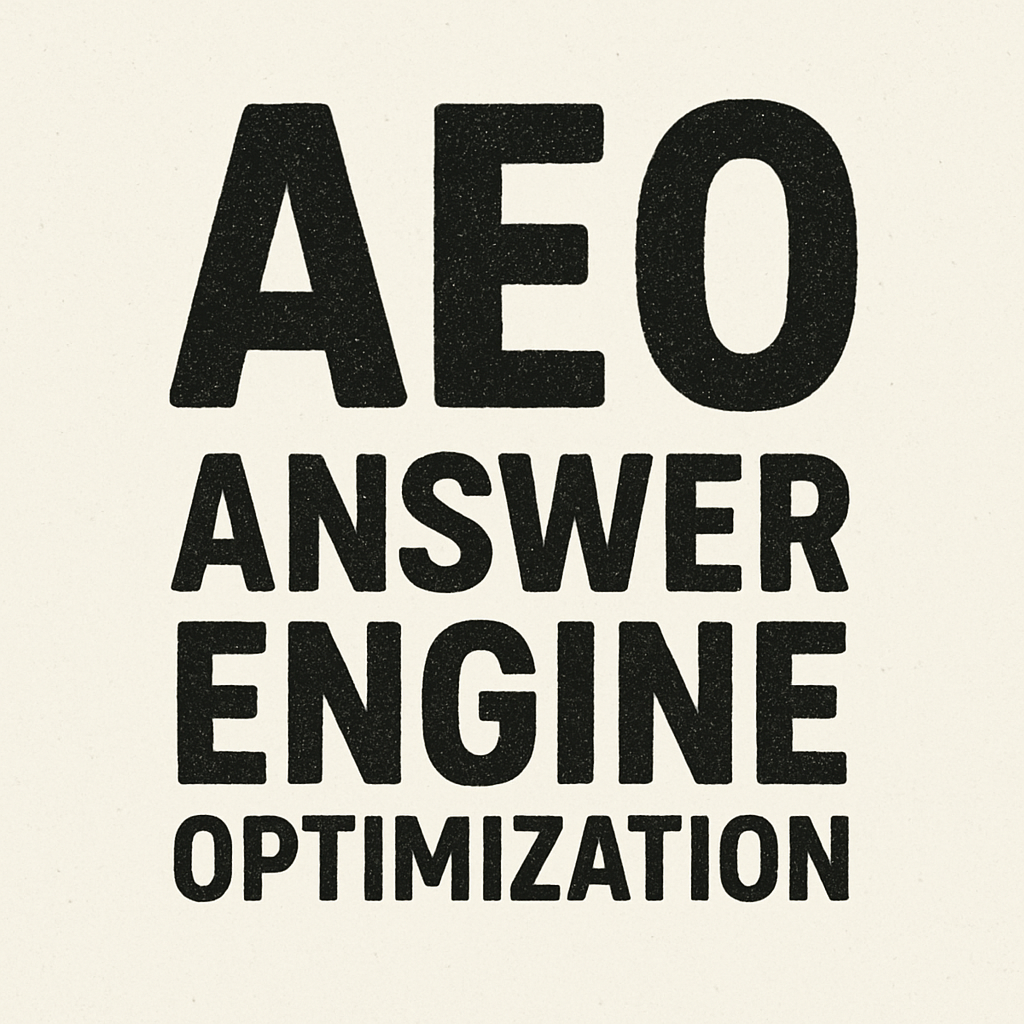
User queries are increasingly more conversational, suiting AEO methods. This shift demands content that answers directly and effectively.
AEO also places importance on the context behind questions. Understanding search context aids in providing relevant responses.
As AI evolves, AEO’s role in digital marketing strengthens. It not only enhances visibility but improves user satisfaction through targeted answers.
Ultimately, AEO redefines content creation to accommodate AI advancements. This adaptation ensures relevance in a rapidly transforming digital landscape. Integrating AEO strategies ensures content meets both current and future search needs.
SEO vs AEO: Key Differences and Similarities
SEO and AEO have distinct objectives but some overlapping elements. Understanding these differences clarifies how to effectively optimize content.
SEO, or Search Engine Optimization, targets search engine algorithms. Techniques involve optimizing keywords, building backlinks, and improving site structure.
AEO, on the other hand, is tailored for AI-driven platforms. It focuses on delivering precise answers and enhancing user experience.
Both approaches aim for visibility but differ in methods. SEO relies on traditional techniques such as keyword density and link building.
AEO uses structured data and natural language to satisfy AI queries. It emphasizes content clarity and relevance to user questions.
Key Differences:
- Focus: SEO targets search engines; AEO targets AI systems.
- Techniques: SEO utilizes keywords; AEO uses structured data.
- Goals: SEO aims for rank; AEO aims for answer quality.
Both SEO and AEO require understanding user intent. SEO often predicts user queries based on keyword popularity.
In contrast, AEO anticipates conversational queries from voice search. This aligns content with AI-driven search patterns.
AEO and SEO share the goal of improving online visibility. They differ in execution, yet both evolve with digital trends.
Key Similarities:
- User Intent: Both strategies focus on meeting user needs.
- Content Quality: High-quality content is crucial for success.
- Adaptability: Both require adaptation to technological changes.
SEO and AEO each have strengths. SEO’s traditional techniques remain vital, especially for text-based searches.
AEO excels in environments where quick, accurate answers are needed. This includes AI assistants like Siri and Alexa.

Integrating AEO and SEO strategies can enhance digital presence. It’s essential to balance traditional search techniques with new AI-focused methods.
Ultimately, understanding both SEO and AEO helps craft a comprehensive strategy. This dual approach ensures visibility across diverse search platforms.
In conclusion, each strategy offers unique advantages. The choice depends on target audiences and technological advances. Balancing SEO and AEO can maximize impact in a rapidly evolving digital world.
SEO vs GEO vs AEO: A Comparative Overview
In today’s digital landscape, understanding SEO, GEO, and AEO is pivotal. Each serves distinct purposes but overlaps in some areas.
SEO remains the cornerstone of digital marketing. It optimizes content for search engines using keywords and metadata.
GEO, or Geographic Optimization, focuses on local visibility. It is crucial for businesses targeting local consumers.
AEO dives into the realm of AI-driven search engines. It ensures that content answers user queries effectively.
Distinct Characteristics:
- SEO: Aims for broad search visibility using traditional techniques.
- GEO: Enhances local search presence via location-based keywords.
- AEO: Tailors content for AI’s understanding and user questions.
SEO utilizes strategies like backlinking and on-page SEO to improve search rankings. These remain highly effective for reaching a global audience.
Meanwhile, GEO employs tools like Google My Business to enhance local search results. This can drive foot traffic to physical locations.
AEO, unique in approach, enhances interaction with AI systems like chatbots. It optimizes the content’s context and clarity for precise answers.
Applications:
- SEO: Best for wide-reaching online businesses.
- GEO: Ideal for local retailers and service providers.
- AEO: Perfect for AI-driven searches and voice technology.

While SEO provides a foundation, GEO offers a localized approach. AEO, however, is designed for the AI era.
Understanding each strategy enables businesses to choose effectively. By integrating these approaches, one can address diverse audience needs.
The integration of SEO, GEO, and AEO delivers a robust digital strategy. It’s essential to consider which fits your business goals best.
In conclusion, balancing these strategies can elevate online visibility. Knowing when to apply each is key to digital success.
The Evolution of Search: From Keywords to AI-Driven Answers
The journey from traditional SEO to AI-driven search is transformative. Initially, keyword stuffing was the norm for ranking success.
Over time, search engines refined their algorithms. They began to prioritize quality over quantity.
Understanding user intent became a priority. This shift led to more sophisticated search engine algorithms.
Now, AI technology is further evolving search dynamics. AI focuses on delivering precise, context-based answers.
Natural language processing (NLP) plays a vital role here. It helps AI interpret search queries more accurately.
Key Milestones in Search Evolution:
- Keyword-Dominated Era: Reliant on keyword frequency and density.
- Algorithm Updates: Focused on content quality and relevance.
- AI and NLP: Emphasizing context and precision in answers.
AI-driven search engines are increasingly conversational. They engage users by comprehending natural questions.
This shift necessitates new strategies for marketers. They must optimize content not just for keywords but for meaning.

Answer Engine Optimization (AEO) is crucial in this new landscape. It ensures content aligns with AI’s contextual understanding.
Businesses that adapt to these changes will thrive. They will lead in a world where AI-driven searches dominate.
In summary, embracing AI in search strategies is essential. This evolution continues to redefine digital visibility and engagement.
AEO vs Traditional SEO Effectiveness: What the Data Shows
When comparing AEO and traditional SEO, effectiveness varies. Data shows both have distinct strengths.
Traditional SEO remains vital. It includes practices like keyword optimization, backlinking, and on-page elements.
However, AEO has gained traction with AI’s growth. It focuses on optimizing content to answer specific queries.
Key Performance Indicators for Comparison:
- Search Rankings: Shows SEO’s effect on visibility.
- Answer Accuracy: Highlights AEO’s precision in query responses.
- Engagement Rates: Indicates user interaction and satisfaction.
Studies reveal SEO consistently boosts visibility across search engines. Pages using SEO tactics appear in top search results.
However, AEO excels in AI-driven environments. It’s particularly effective for voice searches and virtual assistants.
Industry-Specific Effectiveness:
- E-commerce: Traditional SEO improves product visibility and reach.
- Information Services: AEO offers more accurate answers, enhancing user satisfaction.
- Local Businesses: A hybrid approach enhances search engine and AI visibility.

AEO’s ability to integrate with AI is crucial. It aligns perfectly with AI’s natural language processing abilities.
Meanwhile, SEO remains essential for indexing and ranking. It establishes a foundation for online discovery.
Yet, merging the two yields remarkable results. Hybrid strategies ensure competitiveness in both traditional and AI-driven searches.
Data supports this blended approach. Businesses adopting both see increased traffic and conversions.
In conclusion, the effectiveness of AEO versus traditional SEO varies. Both are indispensable for a comprehensive digital strategy.
Core SEO Techniques: What Still Works in 2024
Traditional SEO techniques have evolved, yet their core principles still drive search success.
Keyword optimization remains foundational. Carefully selected keywords help establish relevance.
On-page SEO continues to play a vital role. Crafting meta titles and descriptions boosts page visibility.
Backlinks provide authority. Quality links indicate trust to search engines.
Key Techniques Still in Use:
- Keyword Research: Choosing the right keywords for target audiences.
- On-Page Elements: Title tags, headers, and image alt texts.
- Content Quality: Engaging, informative, and reliable content.
While SEO evolves, technical aspects are ever-important. Site speed and mobile-friendliness impact rankings significantly.
Another crucial factor is user experience. Intuitive navigation retains visitor interest and engagement.
Technical Enhancements:
- Site Speed Optimization: Ensures quick load times.
- Mobile Optimization: Enhances accessibility across devices.
- Secure Connections: HTTPS impacts trust and rankings.

Creating compelling content is more pivotal than ever. Search engines favor content that answers user queries effectively.
SEO in 2024 isn’t just about tactics. It’s about adapting to changes in search algorithms.
Dynamic SEO strategies integrate AEO. This ensures performance across both traditional and AI-powered platforms.
In short, tried-and-true SEO techniques still matter. They remain essential alongside newer methodologies.
AEO Strategies: How to Optimize for AI and Answer Engines
Answer Engine Optimization (AEO) is reshaping the way we approach search. It aims to cater directly to AI-driven engines and voice assistants. This involves understanding how AI processes and retrieves information.
The first step is focusing on user intent. Content should directly address users’ questions in a clear and concise manner. Think about what users want to know.
Natural language processing (NLP) is crucial. Structuring content in a conversational style ensures better comprehension by AI. It mirrors how people communicate.
Key AEO Strategies:
- Intent-Driven Content: Focus on providing precise answers.
- Conversational Tone: Utilize simple and direct language for clarity.
- Concise Answers: Aim for brevity in responses.
Schema markup is another powerful tool. It helps search engines comprehend the context of your content. This improves your chances of being featured as a direct answer.
Using structured data supports AI in drawing connections. It helps your content stand out in answer boxes and featured snippets.
Implementing Structured Data:
- Schema Markup: Enhance content with appropriate tags.
- Structured Insights: Present data in tables or lists.
- Semantic HTML: Use tags that define content meaning.

Voice search optimization goes hand in hand with AEO. Crafting responses for voice searches requires anticipating full-sentence queries. It considers colloquial language patterns.
Keep an eye on evolving AI technologies. Adapting strategies to changes in AI can maintain and enhance visibility.
Overall, future-proofing for AI involves a dual focus. Optimize for both AI interpretation and user satisfaction.
AEO isn’t just about technology; it’s about crafting useful content. Striking this balance enhances engagement and visibility.
Embrace these AEO strategies to stay ahead. Optimize your content for AI engines and reap the benefits.
Content Structure and Formatting for Dual Optimization
Optimizing content for both SEO and AEO requires intentional structuring and formatting. This means thinking both like a search engine and an AI.
Creating skimmable content is essential. Use headers, subheadings, and bullet points. This helps users and machines quickly navigate your content.
Elements of Effective Content Structure:
- Headers: Clear, descriptive titles to break down information.
- Bullet Points: For listing key information succinctly.
- Short Paragraphs: Easier for readers and AI to digest.
Using visual elements can also enhance comprehension. Infographics, tables, and charts supplement written content. They provide quick access to complex information.
Optimize images with descriptive alt text. This improves searchability for both traditional and AI engines. Alt text helps AI understand image content.
Formatting Techniques for Optimization:
- Infographics: Simplify dense information visually.
- Tables: Organize data points clearly and logically.
- Descriptive Alt Text: Enhance SEO and AI recognition.

Create a logical flow in your content. This means moving from broad topics to detailed explanations. Coherent structure aligns with user queries and AI logic.
Employ meaningful internal linking. Direct your audience to related content smoothly. Internal links reinforce topic authority and aid AI in establishing context.
Balancing user-friendly formatting with SEO and AEO techniques boosts your content’s reach. By focusing on these strategies, your content remains accessible to both people and AI.
Effective structuring not only satisfies search engines but also enhances the user experience. It’s a dual optimization approach that yields greater visibility.
Structured Data, Schema, and NLP: The Technical Backbone
Structured data, schema markup, and Natural Language Processing (NLP) form the backbone of successful AEO. These technologies enhance AI’s comprehension of your content.
Structured data involves organizing information into a format readable by machines. This allows search engines to index your content more effectively.
Schema markup is a vital aspect of structured data. It uses semantic vocabulary to provide more context to search engines. This helps content appear in rich snippets and knowledge graphs.
Benefits of Schema Markup:
- Increased Visibility: Appearing in rich results can boost click-through rates.
- Better Context: Provides AI with detailed content understanding.
- Enhanced User Experience: Users find what they need faster.
NLP plays a crucial role in AEO. It helps AI interpret and understand human language nuances. This makes interactions with AI-driven platforms more intuitive.
Key NLP Concepts for AEO:
NLP involves various techniques like entity recognition and sentiment analysis. These help AI comprehend user intent and deliver more relevant results.
Integrating schema and NLP into your site requires technical know-how. But the potential benefits for visibility and engagement are substantial.

Together, structured data, schema, and NLP bridge the gap between human language and machine understanding. They form a robust foundation that aids in optimizing for AI-driven search environments.
To stay competitive, keeping abreast of advancements in these areas is essential. Adoption of these technical strategies ensures your content remains discoverable amidst evolving search technologies.
Voice Search, AI Assistants, and Zero-Click Search: The New Search Landscape
The world of search is evolving rapidly, driven by technological advancements. Voice search and AI assistants have reshaped how users interact with information.
Voice search is becoming increasingly popular. Devices like Amazon Echo and Google Home enable users to query the internet with spoken questions.
AI assistants, such as Siri and Alexa, rely on voice search to deliver answers. They process spoken language to execute tasks and answer queries promptly.
Zero-click searches have also gained prominence. In these, users find their answers directly on the search results page without clicking on a link.
Key Features of the New Search Landscape:
- Conversational Queries: Users speak naturally, using full sentences.
- Immediate Answers: Results appear without navigating away from the search page.
- User Convenience: Simplified access boosts user engagement.

To adapt, businesses must consider optimizing content for voice and zero-click searches. This involves using question-based keywords and structured data.
The focus is on providing direct answers. Content should address specific queries clearly and concisely to succeed in this new environment.
The evolution of these technologies is shaping user expectations. Companies that embrace these changes can enhance their online presence and meet user demands effectively. Adapting strategies to this landscape ensures relevance in a digital world where instant answers are the norm.
User Intent, Engagement, and Personalization in SEO and AEO
Understanding user intent is critical in both SEO and AEO. People search with specific goals, whether it’s finding information, making a purchase, or seeking entertainment.
Optimizing for user intent means tailoring content to meet those goals. This enhances user satisfaction and increases the chance of converting visitors into customers.
Engagement is another vital factor. Engaging content keeps users on the page longer, signaling to search engines and AI that the content is valuable.
Personalization allows content to resonate with individual users. By using data to offer tailored experiences, personalization boosts relevance and engagement.
In SEO and AEO, personalization involves dynamic content delivery. This can be based on user behavior, preferences, and location.
Strategies for Boosting Engagement and Personalization:
- Behavioral Targeting: Use data analytics to understand and predict user needs.
- Content Customization: Tailor content delivery based on user segments.
- Interactive Elements: Engage users through surveys, quizzes, and other interactive content.

AI plays a crucial role in personalization. It processes vast amounts of data to deliver targeted results that match user intent.
Ultimately, user intent, engagement, and personalization are interconnected. Optimizing these areas strengthens both SEO and AEO efforts. By focusing on these elements, businesses can significantly improve their online presence and connect more effectively with audiences.
Measuring Success: KPIs and Analytics for SEO and AEO
Measuring success in SEO and AEO involves tracking key performance indicators (KPIs). These metrics help you understand the effectiveness of your strategies.
For SEO, common KPIs include organic traffic, bounce rate, and keyword rankings. These metrics offer insights into how well your site attracts and retains visitors.
In AEO, user interaction with AI-driven results is key. Metrics like voice search performance and engagement through AI-powered interfaces are critical.
Analytics platforms provide data for both SEO and AEO. Google Analytics and AI-specific tools enable you to monitor trends and make data-driven decisions.
Important KPIs for SEO and AEO:
- Organic Traffic: Number of users visiting from search engines.
- Keyword Rankings: Position of your site for target keywords.
- AI Engagement: User interaction with AI-generated answers.

Understanding the nuances between SEO and AEO analytics can refine your strategies. In AEO, focus on how content addresses queries effectively through AI.
Regularly reviewing KPIs allows for timely adjustments. This ensures that your content stays relevant and responsive to evolving search behaviors. By doing so, you build a robust foundation for long-term success in both traditional and AI-driven search environments.
Industry-Specific Insights: When to Prioritize SEO, AEO, or GEO
Different industries benefit from various optimization strategies. Tailoring your approach to your industry can enhance your digital presence effectively.
SEO is foundational for industries targeting broad audiences. Retail and e-commerce rely heavily on SEO for high search visibility to attract diverse customers.
Conversely, AEO shines in sectors focused on precision and user-specific answers. Healthcare and finance sectors benefit by providing accurate responses through AI.
GEO, or geographic optimization, is critical for local businesses. Restaurants and service providers prioritize GEO to connect with nearby customers.
Key Considerations:
- SEO: Essential for reach and visibility in competitive markets.
- AEO: Optimal for industries needing precise information delivery.
- GEO: Vital for businesses targeting local clientele.

Evaluate your industry needs to determine which strategy to prioritize. Combining these approaches can also be beneficial, depending on your goals.
The tech industry, for example, might leverage all three: broad SEO tactics, precise AEO answers, and local GEO targeting.
Choosing the right strategy helps improve customer engagement and search visibility. Align your optimization efforts with your industry’s unique demands to maximize digital success.
Case Studies: Brands Winning with AEO, SEO, and Hybrid Approaches
Successful brands often integrate multiple optimization strategies to excel in the digital landscape. Let’s explore how some have thrived using AEO, SEO, and hybrids.
Example 1: AEO Success Story
Company X operates in the health sector, focusing on delivering precise information. They used AEO to structure content for AI-driven searches. As a result, their user engagement doubled as more users found reliable answers quickly.
Example 2: SEO Mastery
An e-commerce giant, Company Y, leverages SEO to dominate search results. By optimizing keywords and building authoritative backlinks, they increased site traffic by 150% in a year. Their strategic focus on SEO has placed them ahead in search visibility.
Example 3: Hybrid Approach
Company Z, a tech enterprise, adopted a hybrid strategy using both SEO and AEO. They optimized content for human readers and AI engines alike. This balanced approach led to a 40% increase in conversions, demonstrating the power of dual optimization.
Key Takeaways:
- AEO: Perfect for accuracy and direct answers.
- SEO: Ideal for driving comprehensive traffic and brand visibility.
- Hybrid: Combines strengths of both for broader reach and relevance.

Example 4: Local SEO and GEO
A local restaurant, known as Company A, effectively used GEO and SEO. By targeting geographic-specific keywords, they skyrocketed to the top of local search results, boosting foot traffic significantly.
Each case illustrates unique strategic benefits. Tailoring your approach based on your sector and objectives is crucial for digital success. Understanding these varied examples helps guide more informed decision-making in your digital marketing strategies.

Common Pitfalls and How to Avoid Them in SEO and AEO
Navigating the complex world of SEO and AEO can be challenging. Common pitfalls often arise from misunderstanding key principles. One prevalent mistake is ignoring user intent, leading to irrelevant content that fails to engage.
Another issue is over-optimization. This can result in content that feels robotic and is penalized by search engines. Balance is crucial, ensuring content remains natural and user-friendly. Failing to keep up with algorithm changes can also hinder success.
Staying updated with the latest search engine updates and technological advancements is vital. Do not overlook the role of technical SEO and proper schema implementation. These elements enhance AI understanding and improve search visibility.
Key Pitfalls to Avoid:
- Ignoring user intent
- Over-optimizing content
- Neglecting algorithm changes
To avoid these errors, regularly audit your strategies and educate yourself on emerging trends. This proactive approach can help maintain your digital presence.

Future-Proofing Your Content: Integrating SEO and AEO for 2025 and Beyond
As digital landscapes evolve, future-proofing your content is vital. Embrace both SEO and AEO to ensure lasting visibility. Integrating these strategies can safeguard your online presence against technological shifts.
Begin with a comprehensive SEO foundation. Traditional techniques like keyword optimization and backlinking remain relevant. But incorporating AEO is now crucial. Adapt your approach to include elements that prioritize AI comprehension and user interaction.
Focus on content that resonates with both search engines and AI-driven platforms. This dual optimization strategy enhances reach and engagement. Employ structured data and schema markup to facilitate AI interpretation. These tools help search engines understand your content’s context and relevance.
Essential Steps for Future-Proofing:
- Maintain a solid SEO foundation
- Integrate AEO practices
- Utilize structured data and schema
Stay informed about emerging trends in search technology. Voice search and AI-driven queries are on the rise. Adapting to these changes will keep your content competitive. Continuous learning and flexibility are key to success in this dynamic landscape.

FAQs: What is AEO vs SEO? Your Top Questions Answered
As businesses evolve, understanding AEO and SEO becomes crucial. These concepts hold unique positions in the digital ecosystem. Here are answers to some of the most pressing questions.
1. What exactly is AEO?
AEO, or Answer Engine Optimization, tailors content for AI-driven engines. It focuses on providing answers in a way that AI can interpret easily.
2. How does SEO differ from AEO?
SEO targets traditional search engine algorithms. It optimizes content to rank higher based on keywords and site architecture.
3. Why is AEO important now?
AI technology is increasingly integrated into search processes. AEO helps ensure content is visible in AI-driven results.
4. Should I focus on SEO or AEO?
Both! A balanced approach enhances overall visibility. Adapt based on your audience and the platforms they use.
Quick Recap:
- AEO optimizes for AI engines.
- SEO focuses on search engine algorithms.
- AI evolution makes AEO crucial.
- A dual focus strengthens digital strategies.
Understanding these principles helps craft more effective online content. Incorporate both to future-proof your strategy.
Conclusion: Building a Search Strategy for Google and AI
The digital landscape is changing. To stay ahead, your content must adapt to search engines and AI. Both SEO and AEO play pivotal roles in this evolution.
SEO remains foundational. It structures your content for search engines, focusing on traditional algorithms. But as AI grows in influence, AEO becomes more significant. It ensures content communicates with AI, offering clear answers and user satisfaction.
A strategic blend of SEO and AEO is essential. This approach covers all bases, increasing your content’s reach and relevance. It’s about harmonizing traditional techniques with emerging technologies.
In this dynamic environment, flexibility is key. Continuously evaluate and adjust your strategies for ongoing success. By effectively integrating SEO and AEO, your content can thrive in a world where both Google and AI dictate search trends. Embrace the future by optimizing holistically.
Here is the Google Seo guide. You can refer to this and learn more deeply about seo and rank your website. Now

